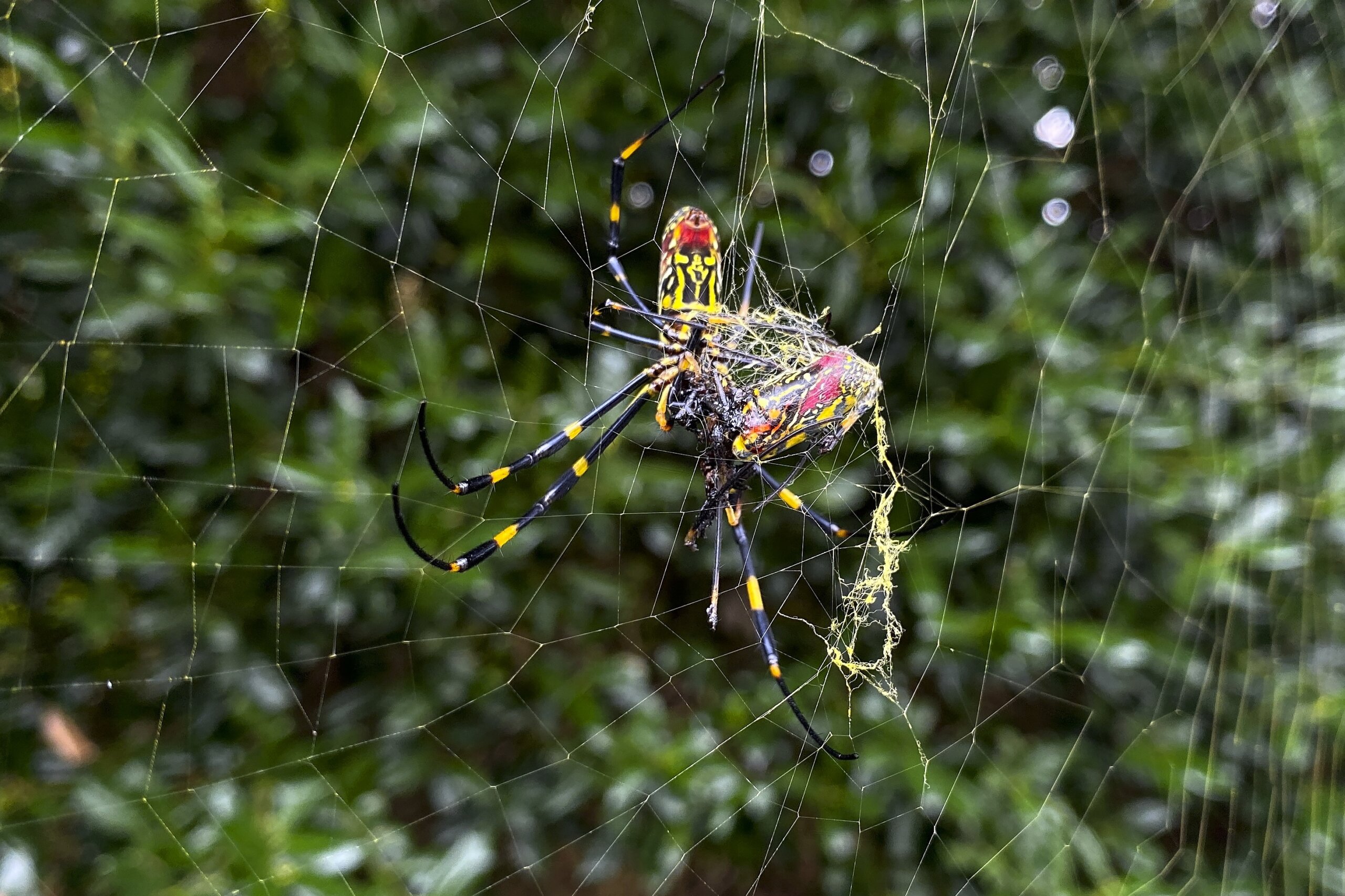It has eight legs, can grow up to 4 inches long and spin webs that are a meter in diameter — and this arachnid may eventually call the D.C. region home.
It’s called the Joro spider and is originally from East Asia, and right now the colorful tropical orb weaver is taking hold in Georgia.
“The arachnophobes are going to hate this one, but the arachnophiles are really going to like it,” said the “Bug Guy” Mike Raupp, professor emeritus at the University of Maryland College Park.
According to Raupp, this spider — unlike its North and South American relatives the golden silk orb-weaver — can take colder temperatures. That is due in part to the Joro spider having a higher metabolism and a faster heartbeat, which allows it not only to take the cold but also develop faster.
Being a heartier spider, it’s expected to crawl its way up the Eastern Seaboard eventually, according to Raupp.
“[It] has the potential to reach perhaps as far north as Maryland or even parts of New England,” he said.

While it is unknown when the spider could reach the D.C. region, Raupp doesn’t expect it to arrive this summer.
The spider is poisonous but not aggressive, and experts believe the fangs are too small to break the skin of humans or pets.
“We don’t have to fear this one from that standpoint,” Raupp said.
Because it would be a nonnative creepy-crawly moving in, it’s hard to truly know what impact it could have on the area’s ecosystem, but Raupp said there is a chance this spider could be beneficial. In Asia, it likes to feast on brown marmorated stink bugs and spotted lanternflies, two problematic species that have already made their way into the region.
“It’ll be kind of like Hannibal Lecter having an old friend over for lunch,” Raupp said.
As we watch for its arrival, Raupp recommends not killing the spider if you see it, because it will help control pest problems.
“If you should have this large spider building a web, you could simply move that web or the spider with a broom gently and it will simply construct its web elsewhere,” Raupp said.
Also, if you suspect you’ve seen one, Raupp said take a picture and send that to the state or city department that handles agricultural pests. Universities with entomology departments can also help confirm that you found a Joro spider.








